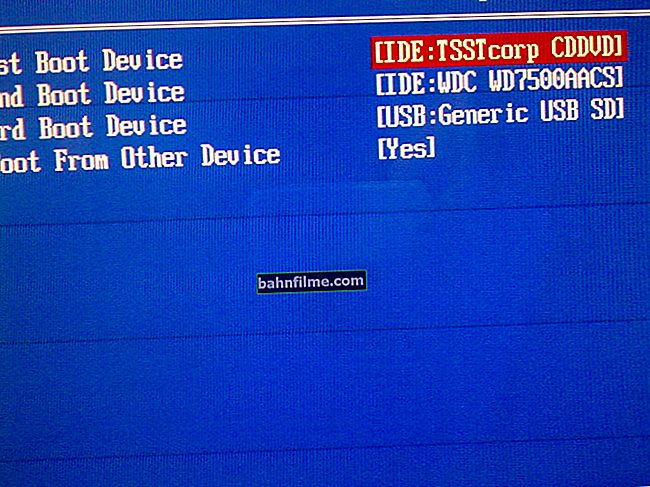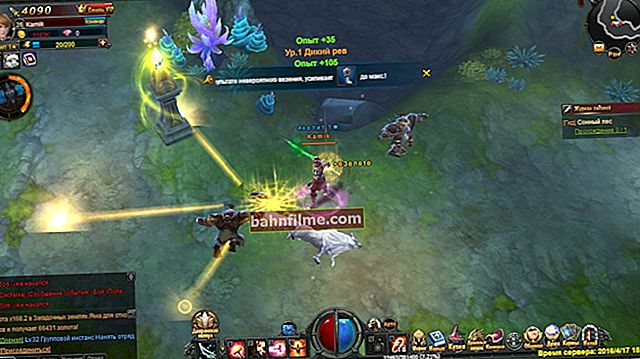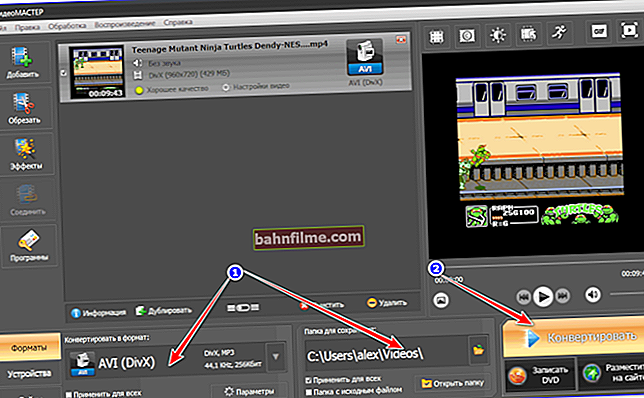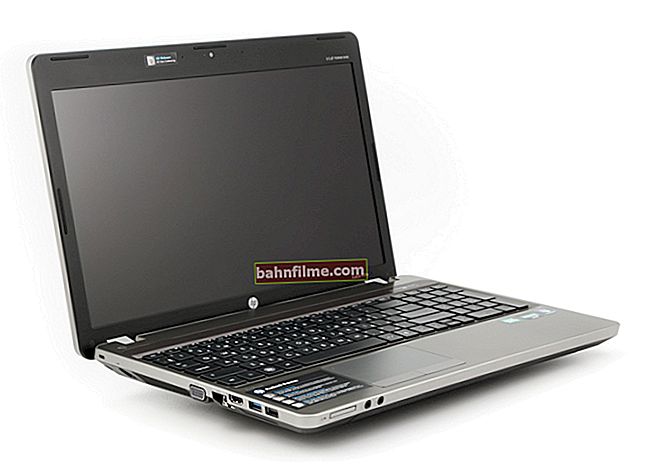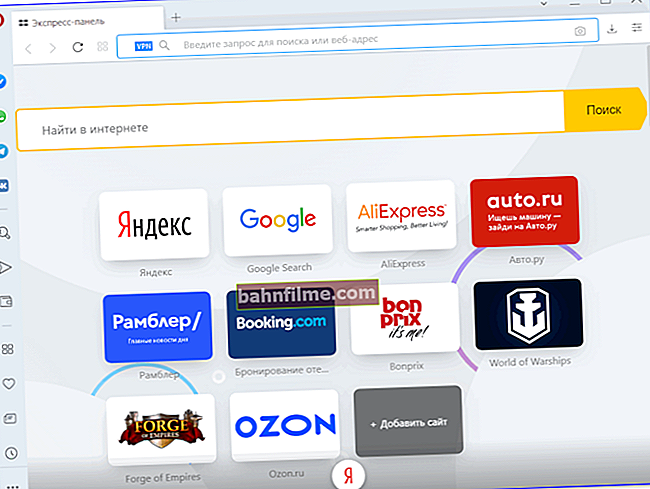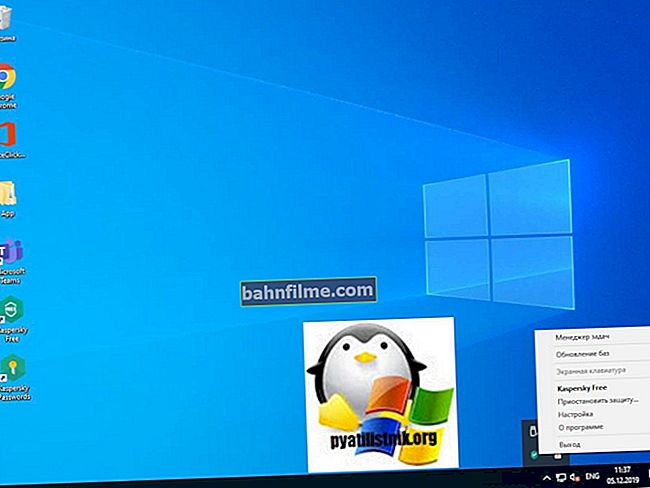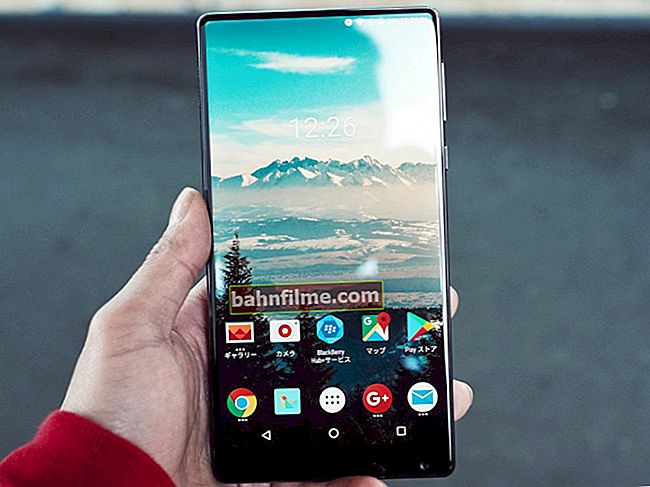 Good time everyone!
Good time everyone!
Many modern devices are simply impossible to imagine without an Internet connection. But not all users know that if one of the devices is connected to the Internet, then it can be hand out (i.e. give access to the network) and other computers, laptops, tablets, etc. 👌
Actually, in this article I wanted to consider different options for how you can distribute the Internet to several devices at once. A sort of consolidating article of some of the other instructions on my blog.
Note that in the article I am not considering methods of direct connection to the Internet (you can read about it here).
And so, now more to the point ... 👀
*
How to distribute the Internet: ways
From phone (on Android)
Perhaps this is one of the most popular options, because You can use it in many cases: when your main provider does not work, when you are at the dacha, on a trip (i.e. away from home), if you live in an area where there is no wired connection, etc.
What else captivates the method: all you need to connect is an ordinary smartphone on Android (now the absolute majority have such devices).
*
By USB cable (tethering)
Note: The USB cable is included with the phone (the phone is usually always completed with a USB cable, power supply. Some additional models include a CD with drivers, headphones).
1) First you need to connect the USB cable to your computer and phone (I think there is nothing complicated here).
By the way, if you have a modern laptop, then you may be faced with the fact that it only has USB Type-C and there are no "usual" USB ports (or there are not enough of them). In this case, you can buy specials. adapters in 👉 Chinese online stores.

We connect the phone to the computer using a USB cable
2) Next, in the Android settings (section of wireless networks), open the "Modem mode" tab and move the slider to the "on" mode. opposite the item "USB-modem". See screenshot below. 👇

USB tethering included
3) After that, a network icon should appear on your computer (in the tray, next to the clock), signaling access to the Internet (without red crosses, yellow exclamation marks).

network tray icon status: internet connected
In general, that's the whole setting, you can use the network ...
*
Wi-Fi
This method is more convenient because there will be no extra wires (thanks to it, you can share the Internet not only with a laptop (PC), but also with other smartphones).
1) First, you must also open the section "Modem mode" then activate the function "Wi-Fi hotspot" and specify the name of the network, password.

Wi-Fi hotspot created
2) Then, from another device (for example, I used a laptop), when searching for Wi-Fi networks to connect, you should only see the created network.
It remains only to connect to it by entering the password that you set in the previous step.

We connect to the created Wi-Fi network
*
👉 Addition!
If your Wi-Fi network "turned out to be" without access to the Internet, I recommend that you familiarize yourself with this material.
*
From laptop / computer
Wi-Fi
Option # 1: for Windows 10
If you have Windows 10, then all the setup is done literally in a matter of seconds.
1) First, open the Windows options (link in the START menu, or use the keyboard shortcut Win + i), section "Network and Internet" , subsection - "Mobile hot spot" .
Then you need to switch the slider to the mode "On" and remember the name of the network, password.

Mobile hotspot
2) Next, you can connect to the created Wi-Fi network (take a look at the photo below). It is enough to click on the name of our network, enter the password and access to the Internet on the phone is provided.
Settings section on Android: settings -> wireless networks -> Wi-Fi

The phone has a Wi-Fi network that we created ...
Option number 2: universal
As a universal option, I would suggest using a special. utilities. With the help of them, you can share access via Wi-Fi in 2-3 mouse clicks on almost any system (Windows XP, 7, 8, 10). For example, in this regard, the 👉 mHotspot utility is very simple and reliable (link to the official site).
After launching mHotspot, it is enough to specify the name of the network, password, Internet source, which we will share (number 3 in the screenshot below 👇), and press the button "Start Hotspot" .
Then you can connect to the created network on any other device that supports Wi-Fi.

The screenshot below shows the network settings in the mHotspot application.
*
By network LAN cable
One of the most difficult options in terms of settings (in comparison with other methods presented in the article). There are a few things to do here ...
1) For starters you must have 👉 configured a local network (i.e. not just connected one PC / laptop to another with a network LAN cable, but also set the same workgroup, different PC names, set up a network connection).
2) If the local network is configured, then open network connections (to do this, press the Win + R key combination, and in the Run window that opens, use the ncpa.cpl command) on the computer on which do you have internet .
3) In the network window connections you must have at least 2 connections:
- one - provides a local area network (i.e. with another computer to which you want to share the Internet);
- the other is with the Internet.
We need to open internet connection properties (in my example, it even has the same name - in yours, most likely, it will not be so).

Opening the properties of the Internet connection
4) Next in the tab "Access" you must check the box to allow other computers on the local network to use this Internet connection.

Allow other users to use this internet connection
5) Save the settings and check the network operation. If the Internet is not distributed, I would recommend again 👉 this step-by-step instruction - it tells about all the "little things" that may cause problems.
*
Using a router
Perhaps this is the most convenient way to connect all devices in the house (or small company) to the Internet. Thanks to this small "box" (router *), there is no need to keep the PC / laptop (which distributes the Internet) always on.
In addition, the Internet is immediately distributed to all devices in the house: phones, tablets, PCs, laptops, TVs, etc. (the main thing is to set up a Wi-Fi network once).
In general, the topic of setting up a router is quite extensive. Therefore, I recommend that you read one of my previous instructions (link to it below).
👉 To help!
How to connect and configure a new Wi-Fi router yourself - instructions with pictures
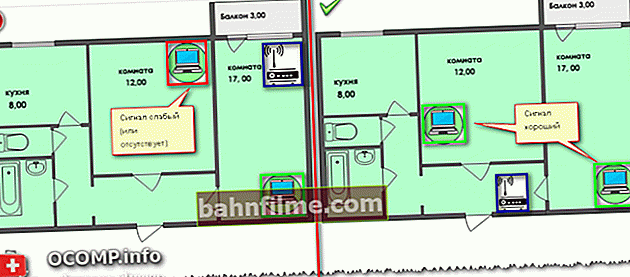
On the choice and location of the router in the apartment
*
That's all for today, successful connection. 👌
Additions on the topic are welcome ...
👋
First published: 26.08.2018
Correction: 10/10/2020
